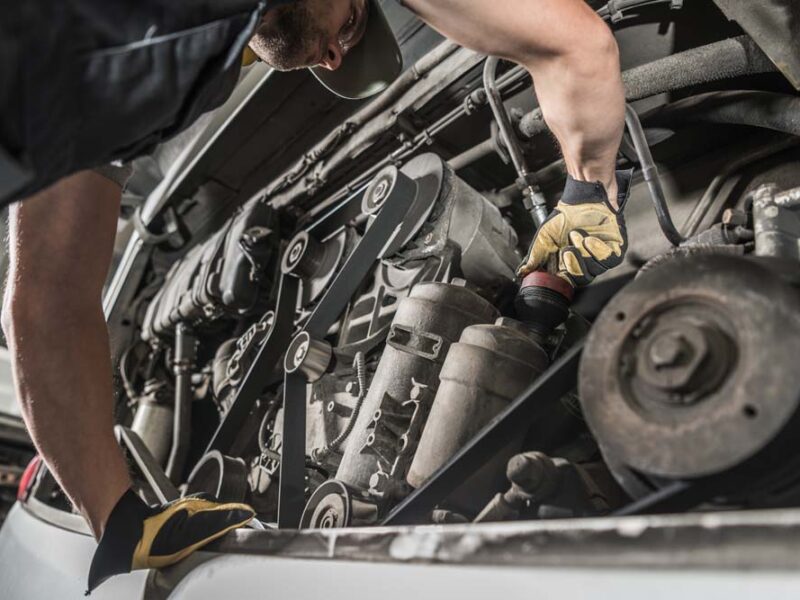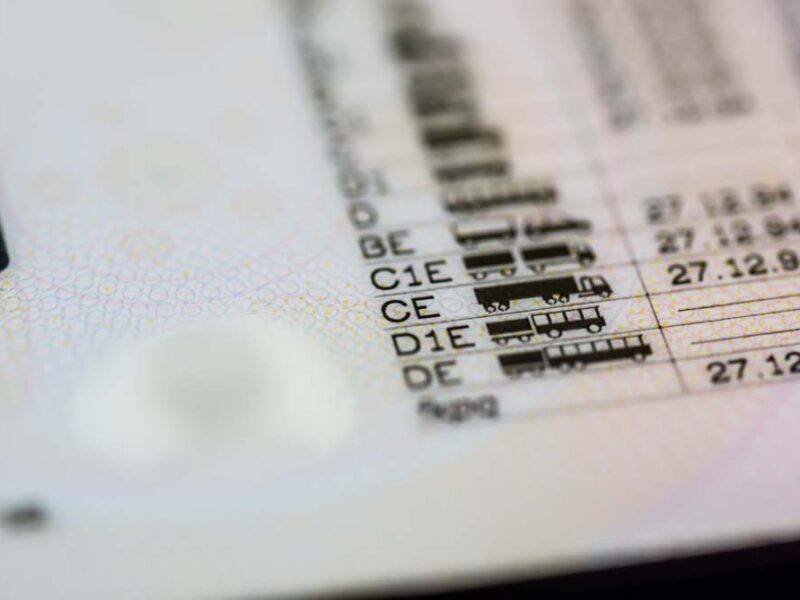Around 18 months ago, The Department for Transport issued a report on the state of Heavy Vehicle Testing in the UK, following disruption by the Covid-19 lockdown measures. The purpose of the review was to gain an understanding on whether current roadworthiness testing was fit for purpose and provide evidence on whether it supported or hindered the effective operation of the haulage and logistics industries. It also considered if heavy vehicle roadworthiness testing could be improved to better meet the needs of customers & suppliers, while delivering the inherent road safety and environmental benefits of vehicle testing. The review looked at the service provided during "normal" times, i.e. before March 2020 and compared that with the periods between March 2020 and August 2020, i.e. peak Covid!
Background to Statutory Testing Requirements
The Road Traffic Act 1988 prohibits the use of a heavy vehicle on a road unless a test certificate has been issued for that vehicle within the past year. Annual roadworthiness tests are carried out by Driver & Vehicle Standards Agency (DVSA) staff who are known as Vehicle Standards Assessors (VSAs). Under operator licensing rules, operators are required to ensure the conduct of regulation safety inspections at regular intervals (usually every 6 weeks or so) of their vehicles, to make sure that standards of vehicle maintenance are correctly maintained. The annual test, which is separate from the regular safety inspection is undertaken by an external, independent VSA.
The majority of heavy vehicle testing takes place at Authorised Testing Facilities (ATFs) located around the country. The DVSA has a contractual arrangement with each of the ATFs, which states the obligations for the ATF in terms of the provision of the testing facility and how to schedule vehicles for testing as well as specifying how the DVSA should schedule the VSAs which undertake the testing, in relation to that. In 2021 there were 436 full time VSAs able to conduct tests within the UK. the Government data for the year 2018-2019 as used in the report, shows that 432,778 HGV tests, 254,439 trailer tests and 77,766 PSV tests were carried out. That equates to 1,755 tests per year or 7.3 tests per day for each Vehicle Standards Assessor, allowing for holiday, sickness and weekends.
Conclusions & Updates
The Role of Testing in Ensuring Safety
Not surprisingly the 2021 report found that annual testing of heavy vehicles is an important element of the regulatory regime designed to support public safety. The testing is an independent check of an operator's fleet and thus its maintenance system's effectiveness in picking up faults and ensuring only road-worthy vehicles are used on the UK's roads. It concluded that although there is evidence to show that some vehicles are perhaps only "brought up to standard" in time for the annual test, the need for an annual test does have a positive effect on ensuring vehicle roadworthiness. The current update does not make mention of the point first muted in the original report, of relying on schemes such as the Earned Recognition (ER) scheme which is awarded to operators with a high compliance rate, to allow holders of these "badges" to benefit from less frequent testing intervals, i.e. to be able to extend the time between inspections to greater than 12 months. This would certainly free up testing space and VSA time, without one would hope road safety and vehicle roadworthiness being compromised.
Building More Certainty and Flexibility into the Testing System
During the 2021 review it was agreed that there is a "fair amount" of administration and having to shift some vehicles around in order to accommodate testing and re-testing of vehicles. Among the end users there was evident frustration about some of the obstacles and issues that operators faced negotiating the testing regime, with one operator reporting having to make 384 trips to ATFs other than their usual one in order to find open testing slots.
Building flexibility into the system was a key issue identified by stakeholders at the time, and the DVSA has acknowledged that the current process of booking testing capacity and tests can be both stressful and bureaucratic. To address this "bartering process" for testing capacity the DVSA is looking to move away from the current quarterly scheduling process with the ATFs to a system where they agree with each ATF a normal level of testing hours per day and that these stay in place, with reviews undertaken to ensure they are still adequate for the demand, rather than ATFs having to "bid" every quarter. If an ATF wanted to grow their businesses further or to accommodate a temporary peak, then they would be able to request a temporary (or permanent) change. This is only a proposal at present and the DVSA is welcoming feedback from operators and ATFs alike as to how useful it would be. It is hoped that such an approach would give both the certainty and flexibility to the ATFs that end users had asked for during the 2021 review and resultant implementation stage.
One other way that the DVSA has looked at to improve certainty and flexibility in the system is to build on the "Manage your Vehicle Testing" (MYVT) service for ATFs, which is currently being piloted at some sites. The aim is to extend the program to provide account information and enable ATFs to request when they want testing time or days and to be able to change what they have scheduled to meet local demand. The DVSA acknowledges that implementation of this system across the whole network will not "happen overnight" but they are keen to reform the booking process in 2023 and implement changes to achieve the aim of greater certainty and flexibility.
Thawing of Moratorium on New ATFs
The number of ATFs that are currently in operation had been limited by a moratorium on the establishment of new ATFs since 2017. This step was taken as an interim measure to stabilise and improve the service delivery by the DVSA at the time. When the report was published (2021) there were 575 ATFs in operation with around 50 potential new sites waiting for authorisation, should the moratorium be lifted. There was an argument put forward at the time, that allowing new sites to open might lead to increased flexibility in the system and greater competition between ATFs which might in turn lead to a reduction in 'pit fees'. However, this option needed to be viewed alongside the need to recruit more VSAs as both are needed if more appointment slots are to be realised.
In the present day, the DVSA reports that "some" new ATFs have been allowed to open and around 150 new VSAs have ben recruited, along with an increase in apprenticeship programme that the DVSA runs, to ensure the industry continues to attract new blood. The plan is for the number of operational VSAs in Great Britain to stand at 516 by the end of March 2023.
Improving Relationships
The 2021 review acknowledged that the heavy vehicle testing system has 3 participants - DVSA, the testing facilities (ATFs) and the end user - usually a road transport operator. The relationship between the DVSA and end user is "necessarily indirect" but both the testing facilities and the operators are customers of DVSA. Therefore, better information about the performance of the DVSA system and accompanying transparency was thought to be essential in improving these working relationships going forward. The report recommended that the DVSA should consider a "reset of the relationship" and the way its leadership liaises with representatives of service users in the road freight and passenger industries, citing as an example of where this relationship was unbalanced as the suspension of heavy vehicle testing across Great Britain in March 2020 due to Covid-19 restrictions, which saw all testing suspended whilst much of the logistics and some of the bus industries continued to operate with Covid secure procedures and the resulting difficulties with communications between the key stakeholders at the time.
Moving forward to 2022 the DVSA have used their industry forums to develop an initial set of service performance indicators which they hope will allow both sides to better understand the service and thus where or how improvements should be made. The measures include user satisfaction surveys, collecting data on cancellations and levels of appointments committed to. There is a link here to the DVSA Network Business Manager site where one can locate the correct person and ask for help with the information that the DVSA are sharing.
More Data you Say? No Problem!
Finally, the DVSA has implemented an enhanced MOT history service for operators. This service allows anyone to check on the MOT status of any vehicle. However, with heavier vehicles the data was not available in real-time and did not display a vehicle's full MOT history. Nor was it possible to get a digital copy of the vehicle's MOT certificate. In 2023 the DVSA is hoping to provide real-time MOT history and digital certificates for heavier vehicles. In the meantime, it is aiming to put in place a system where VSAs will be able to email a pdf copy of all the vehicle's MOT certificates at the point of test, which will undoubtedly be a useful addition to the whole process.
Ensuring that your heavy vehicles, whether they are HGVs or PSVs are properly maintained and receive their MOTs within the correct time frame is one of the key tenants of the road transport regulatory regime. These changes to the booking system will hopefully ease part of the administrative burden on transport operators. If you need any further advice on the rules and regulations around this aspect of transport operation then please do not hesitate to get in touch. You can click here to send an email or call 01279 818280 to speak to one of our lawyers. We are here to help.
(c) Richard Pelly December 2022

More News and Insight

Changes to Brake Safety Inspections for Commercial Vehicles – April 2025
In April 2025 the brake testing regime guidance will change. Roller Brake Tests, that have been mandatory for years, will be joined by an Electronic Break Performance Monitoring System or EBPMS…

Case Study – Public Inquiry for Gillbard Plant, Autumn 2024
Gillbard Plant was called to Public Inquiry in Autumn 2024. The hearing made headlines in the transport press due to the element of “DVSA Poacher turned Game-keeper” of Gillbard Plant’s Transport Manager, Mr. Anthony Brayley-Willmetts, a former DVSA (VOSA) examiner turned transport consultant…

DVSA Load Security Guidance – Updated December 2024
When carrying loads on lorries every HGV Operator knows how important it is to ensure that goods are secured safely so that they arrive at their destination in good condition and that they do not cause any damage or danger on the UK’s roads during the process of transporting them…

New Rules for Vehicle Operators and Drivers Carrying Out International Journeys
The Department for Transport and the Driver and Vehicle Standards Agency recently issued a bulletin regarding the new rules that vehicle operators and their drivers will have to comply with if travelling on international journeys…

Road Haulage Association Members and DVSA Leadership Work Shadow Each Other!
To help highlight the Road Haulage Association’s “National Lorry Week” which this year was between 4th and 8th November 2024, the Road Haulage Association and the DVSA’s Leadership team decided to spend some time work shadowing each other….

2024 Update to Guide to Maintaining Roadworthiness (GTMR)
The Guide to Maintaining Roadworthiness is the Driver & Vehicle Standard Agency’s (DVSA) standard produced in collaboration with key industry stake holders which explains the responsibilities and systems involved in maintaining vehicles in a roadworthy….

New Driver CPC Reforms to be in Force from 3rd December 2024
Following a very lengthy consultation period on this matter launched in early 2023, Parliament finally debated the “Vehicle Drivers (Certificates of Professional Competence) (Amendment) Regulations 2024” on Tuesday 29th October 2024…

When Sat Nav’s Lead Lorries Astray!
Lorries getting into trouble and causing chaos in the small country roads of Great Britain have been making headlines again. Whilst a lot of this content is amusing and no doubt is a winner with internet audiences there is a very serious side to these incidents…

Traffic Commissioners 2023-2024 Report – the Highlights & the Lowlights of the Year
In early October the Traffic Commissioners of Great Britain published their annual report. The report encompasses the purpose of the individual Traffic Commissioners who are independent regulators for the goods vehicle and public service vehicle industries and their professional drivers…

Vehicle Maintenance Data Collected by the DVSA
In a recent ‘blog’ by the DVSA’s Danny Charles the amount and type of data that the DVSA collects was discussed. Some may find it surprising how much data the DVSA holds and makes available to the general public on individual transport businesses…

Murky Mini-Bus Waters in UK?
There has been reports in the industry news concerning the number of illegal operators of mini bus services who are operating un-hindered by the regulatory enforcement agencies…

Driver CPC – Changes Coming in 2024 and 2025
The Driver Certificate of Professional Competence (DCPC) was introduced in the UK in 2007, as specified in EU Directive 2003/59/EC for all commercial drivers…
